Land Subsidence Characteristics and Numerical Analysis of the Impact on Major Infrastructure in Ningbo, China
Abstract
1. Introduction
2. Analysis of the Regional Characteristics of Typical Subsidence Funnels in Urban Areas
3. Numerical Analysis of Engineering Subsidence in Coastal Reclamation Areas
3.1. Self-Weight Consolidation Settlement
3.2. Consolidation Subsidence under Backfill and Surcharge
3.3. Nonuniform Subsidence Caused by Pile Foundation Engineering
4. Numerical Analysis of the Impact of Land Subsidence on the Deformation of Metro Tunnel Pipelines
4.1. Uniform Land Subsidence
4.2. Nonuniform Land Subsidence
5. Conclusions
- After the comprehensive prohibition of groundwater extraction in Ningbo city in 2008, the cumulative subsidence of the Jiangdong subsidence center in Ningbo city gradually slowed, and the annual subsidence rate decreased to 1.6 mm/a in 2021. However, for nearby areas with dense subway lines in operation and under construction, land subsidence will continue to occur and develop after groundwater extraction is prohibited, which requires attention.
- Among all the soil layers with subsidence, the sedimentation of silty clay in Layer 4 (muddy clay) was the largest, which was more than 600 mm, accounting for more than 50% of the total subsidence. A reasonable treatment method should be proposed for this layer during foundation treatment. When pile loading is carried out on an underconsolidated foundation, additional settlement of the shallow soil layer will occur over a large range.
- After the pile foundation enters Layer 8 (silty sand), the subsidence of the pile itself is small, while the soil around the pile produces large consolidation subsidence under the additional stress caused by its self-weight and the pile side resistance, which leads to nonuniform subsidence between the pile and soil, and the final nonuniform subsidence is up to 560 mm. In the first five years after the pile is driven, the nonuniform subsidence of the pile and soil develops rapidly, the amount of nonuniform subsidence reaches approximately 300 mm and the nonuniform subsidence rate is approximately 60 mm/year. Then, the nonuniform subsidence rate slows and becomes stable.
- Under the action of formation pressure, the tunnel inner diameter converges vertically and expands laterally, and the relationship between the tunnel inner diameter shrinkage and the land subsidence is basically linear within the range of surface settlement. Taking the numerical analysis results of the Ximenkou–Gulou section as an example, under the condition of nonuniform subsidence, the von Mises stress of the segment at the center of the subsidence trough is the largest, reaching approximately 5.1 MPa, far more than the 1.04 MPa obtained under the condition of uniform subsidence. Compared with uniform subsidence, nonuniform subsidence easily leads to cracking of tunnel segments, which leads to failure of the connection between segments.
- Due to the complexity of numerical modeling and multifield coupling, a single-factor analysis strategy was adopted in this study. In the future, multifield analysis or cyclic loading should be considered to conduct a more realistic numerical simulation.
Author Contributions
Funding
Institutional Review Board Statement
Informed Consent Statement
Data Availability Statement
Acknowledgments
Conflicts of Interest
References
- Minh, D.H.T.; Van Trung, L.; Le Toan, T. Mapping ground subsidence phenomena in Ho Chi Minh City through the radar interferometry technique using ALOS PALSAR data. Remote Sens. 2015, 7, 8543–8562. [Google Scholar] [CrossRef]
- Nguyen, M.; Lin, Y.N.; Tran, Q.C.; Ni, C.-F.; Chan, Y.-C.; Tseng, K.-H.; Chang, C.-P. Assessment of long-term ground subsidence and groundwater depletion in Hanoi, Vietnam. Eng. Geol. 2022, 299, 106555. [Google Scholar] [CrossRef]
- Tomás, R.; Romero, R.; Mulas, J.; Marturià, J.J.; Mallorquí, J.J.; Lopez-Sanchez, J.M.; Herrera, G.; Gutiérrez, F.; Gonzalez, P.J.; Fernández, J.; et al. Radar interferometry techniques for the study of ground subsidence phenomena: A review of practical issues through cases in Spain. Environ. Earth Sci. 2014, 71, 163–181. [Google Scholar] [CrossRef]
- Bagheri-Gavkosh, M.; Hosseini, S.M.; Ataie-Ashtiani, B.; Sohani, Y.; Ebrahimian, H.; Morovat, F.; Ashrafi, S. Land subsidence: A global challenge. Sci. Total Environ. 2021, 778, 146193. [Google Scholar] [CrossRef]
- Khalid, U.; ur Rehman, Z.; Liao, C.; Farooq, K.; Mujtaba, H. Compressibility of compacted clays mixed with a wide range of bentonite for engineered barriers. Arab. J. Sci. Eng. 2019, 44, 5027–5042. [Google Scholar] [CrossRef]
- Ur Rehman, Z.; Farooq, K.; Mujtaba, H.; Khalid, U. Unified evaluation of consolidation parameters for low to high plastic range of cohesive soils. Mehran Univ. Res. J. Eng. Technol. 2021, 40, 93–103. [Google Scholar]
- Khan, S.D.; Huang, Z.; Karacay, A. Study of ground subsidence in northwest Harris county using GPS, LiDAR, and InSAR techniques. Nat. Hazards 2014, 73, 1143–1173. [Google Scholar] [CrossRef]
- Kim, K.D.; Lee, S.; Oh, H.J.; Choi, J.-K.; Won, J.-S. Assessment of ground subsidence hazard near an abandoned underground coal mine using GIS. Environ. Geol. 2006, 50, 1183–1191. [Google Scholar] [CrossRef]
- Shi, X.; Fang, R.; Wu, J.; Xu, H.; Sun, Y.; Yu, J. Sustainable development and utilization of groundwater resources considering land subsidence in Suzhou, China. Eng. Geol. 2012, 124, 77–89. [Google Scholar] [CrossRef]
- Wang, J.; Wu, Y.; Liu, X.; Yang, T.; Wang, H.; Zhu, Y. Areal subsidence under pumping well–curtain interaction in subway foundation pit dewatering: Conceptual model and numerical simulations. Environ. Earth Sci. 2016, 75, 1–13. [Google Scholar] [CrossRef]
- Galliková, Z.; ur Rehman, Z. Appraisal of the hypoplastic model for the numerical prediction of high-rise building settlement in Neogene clay based on real-scale monitoring data. J. Build. Eng. 2022, 50, 104152. [Google Scholar] [CrossRef]
- Zhu, Y.; Gao, F.; Ye, J.; Bian, X.; Lin, W.; Chen, Y. Lateral Ground Displacement Induced by EPB Tunneling in Ningbo Soft Clay. In Proceedings of the International Symposium on Environmental Vibration and Transportation Geodynamics, Hangzhou, China, 28–30 October 2016; Springer: Singapore, 2016; pp. 681–688. [Google Scholar]
- Ijaz, Z.; Zhao, C.; Ijaz, N.; Rehman, Z.U.; Ijaz, A. Spatial mapping of geotechnical soil properties at multiple depths in Sialkot region, Pakistan. Environ. Earth Sci. 2021, 80, 1–16. [Google Scholar] [CrossRef]
- Ijaz, Z.; Zhao, C.; Ijaz, N.; Rehman, Z.U.; Ijaz, A. Novel application of Google earth engine interpolation algorithm for the development of geotechnical soil maps: A case study of mega-district. Geocarto Int. 2022, 1–21. [Google Scholar] [CrossRef]
- Holzer, T.L.; Johnson, A.I. Land subsidence caused by ground water withdrawal in urban areas. GeoJournal 1985, 11, 245–255. [Google Scholar] [CrossRef]
- Pacheco-Martínez, J.; Hernandez-Marín, M.; Burbey, T.J.; González-Cervantes, N.; Ortíz-Lozano, J.A.; Zermeño-De-Leon, M.E.; Solís-Pinto, A. Land subsidence and ground failure associated to groundwater exploitation in the Aguascalientes Valley, México. Eng. Geol. 2013, 164, 172–186. [Google Scholar] [CrossRef]
- Nguyen, Q.T. The main causes of land subsidence in Ho Chi Minh City. Procedia Eng. 2016, 142, 334–341. [Google Scholar] [CrossRef]
- Zhu, L.; Gong, H.; Li, X.; Wang, R.; Chen, B.; Dai, Z.; Teatini, P. Land subsidence due to groundwater withdrawal in the northern Beijing plain, China. Eng. Geol. 2015, 193, 243–255. [Google Scholar] [CrossRef]
- Zhao, Y.; Zhou, L.; Wang, C.; Li, J.; Qin, J.; Sheng, H.; Huang, L.; Li, X. Analysis of the spatial and temporal evolution of land subsidence in Wuhan, China from 2017 to 2021. Remote Sens. 2022, 14, 3142. [Google Scholar] [CrossRef]
- Takagi, H.; Fujii, D.; Esteban, M.; Yi, X. Effectiveness and limitation of coastal dykes in Jakarta: The need for prioritizing actions against land subsidence. Sustainability 2017, 9, 619. [Google Scholar] [CrossRef]
- Suganthi, S.; Elango, L. Estimation of groundwater abstraction induced land subsidence by SBAS technique. J. Earth Syst. Sci. 2020, 129, 1–13. [Google Scholar] [CrossRef]
- Abidin, H.Z.; Andreas, H.; Gumilar, I.; Wibowo, R.R.I. On correlation between urban development, land subsidence and flooding phenomena in Jakarta. Proc. Int. Assoc. Hydrol. Sci. 2015, 370, 15–20. [Google Scholar] [CrossRef]
- Xu, Z.; Li, G.; Meng, Q. The influence of the regional land subsidence on the orbit transportation engineering of Beijing city to Tianjin city and the cure counter-plans for it. J. Eng. Geol. 2006, 14, 394–398. [Google Scholar]
- Wu, H.N.; Shen, S.L.; Yang, J. Identification of tunnel settlement caused by land subsidence in soft deposit of Shanghai. J. Perform. Constr. Facil. 2017, 31, 04017092. [Google Scholar] [CrossRef]
- Krishna, S.S.; Lokhande, R.D. Study on the Effect of Surface Subsidence Due to Tunneling Under Various Loading Conditions. Geotech. Geol. Eng. 2022, 40, 923–943. [Google Scholar] [CrossRef]
- Su, X.; Chen, J.; Li, M.; Zhang, J.; Cao, T.; Liu, T. Sensitivity analysis of deformation of large diameter mud-water shield through complex environment. J. Eng. Geol. 2021, 29, 1587–1598. [Google Scholar]
- Wang, X.; Jiang, Y.; Wang, W.; Han, K.; Mao, Z. Research on ground surface settlement effect and numerical simulation of shield tunnel of subway in soft soil of coast in Ningbo. Subgrade Eng. 2018, 4, 61–68+74. [Google Scholar] [CrossRef]
- Meng, F.Y. Effects of Construction-Induced Disturbance on Post-Construction Settlements of Shield Tunnel and Ground in Soft Clayey Strata. Ph.D. Thesis, Zhejiang University, Hangzhou, China, 2019. [Google Scholar]
- Wang, W.; Hou, Y.; Zhao, T.; Li, J.; Bai, S.; Wang, H.; Lu, T. Study on the Impact of Land Subsidence on Major Urban Infrastructure and Its Strategy in Ningbo City; Ningbo Administration and Service Centre for Marine and Ecological Restoration of Natural Resources: Ningbo, China, 2019.
- GB50911–2013; Code for Monitoring Measurement of Urban Rail Transit Engineering. Ministry of Housing and Urban-Rural Development of the PR China: Beijing, China, 2013.
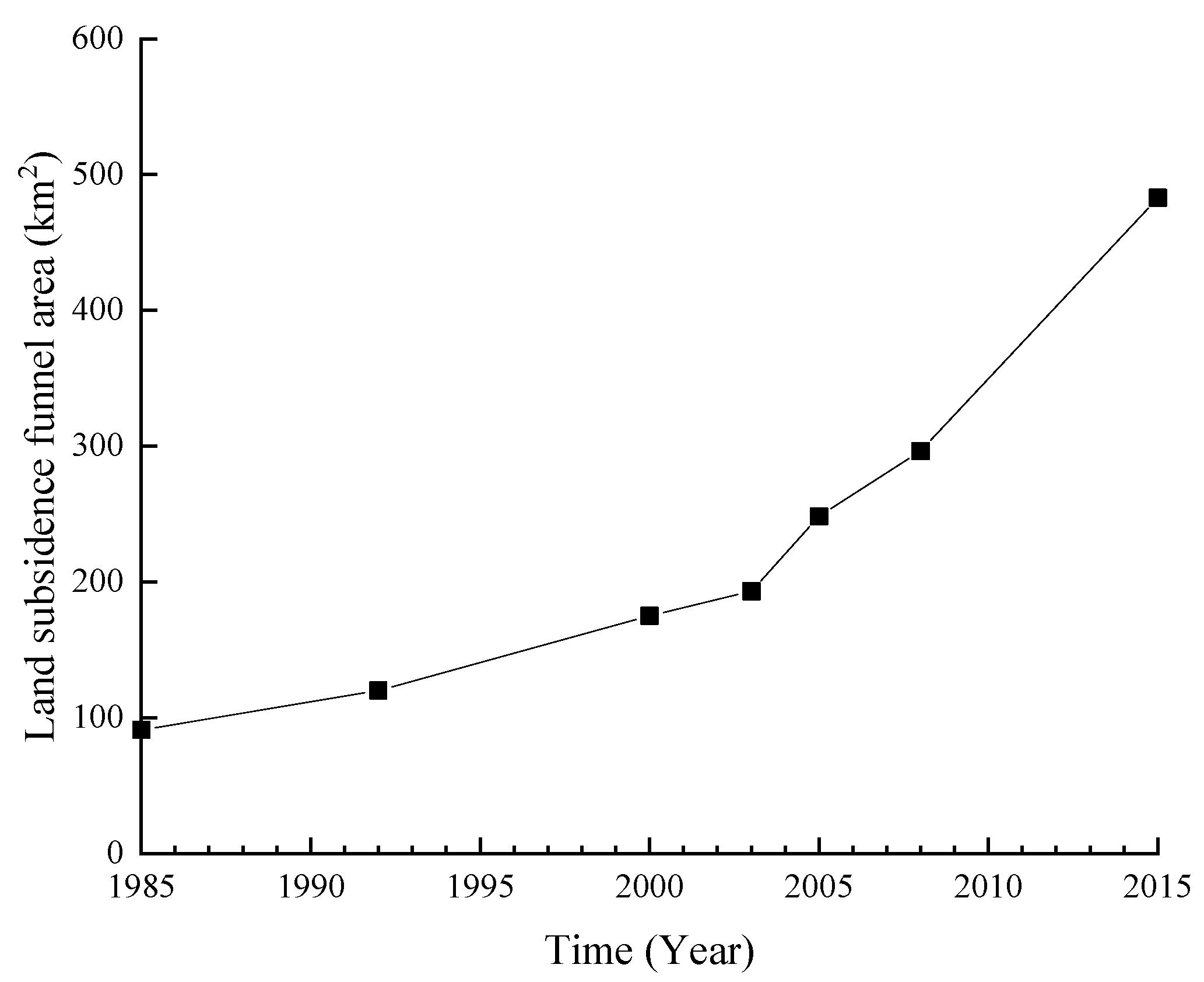

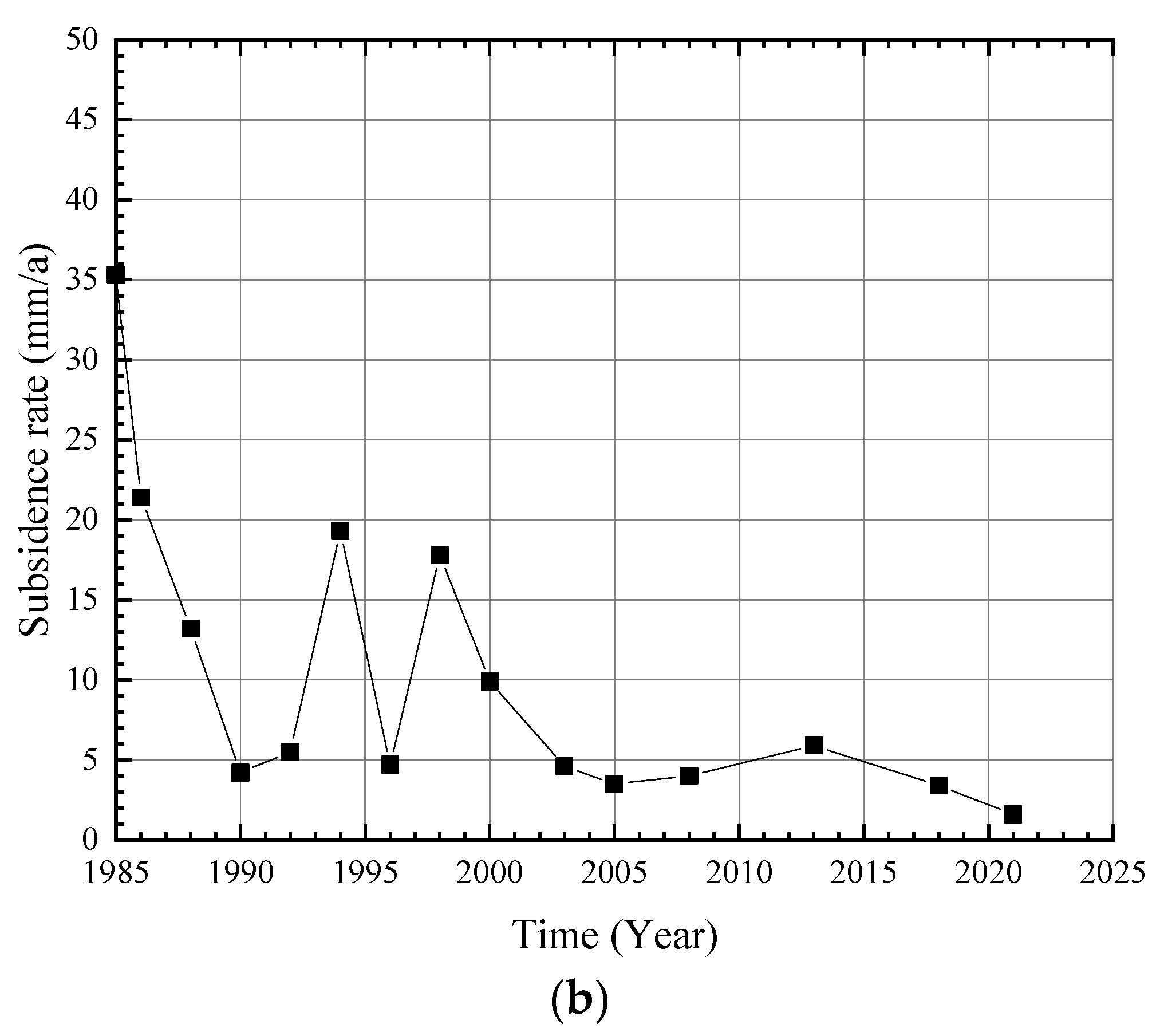

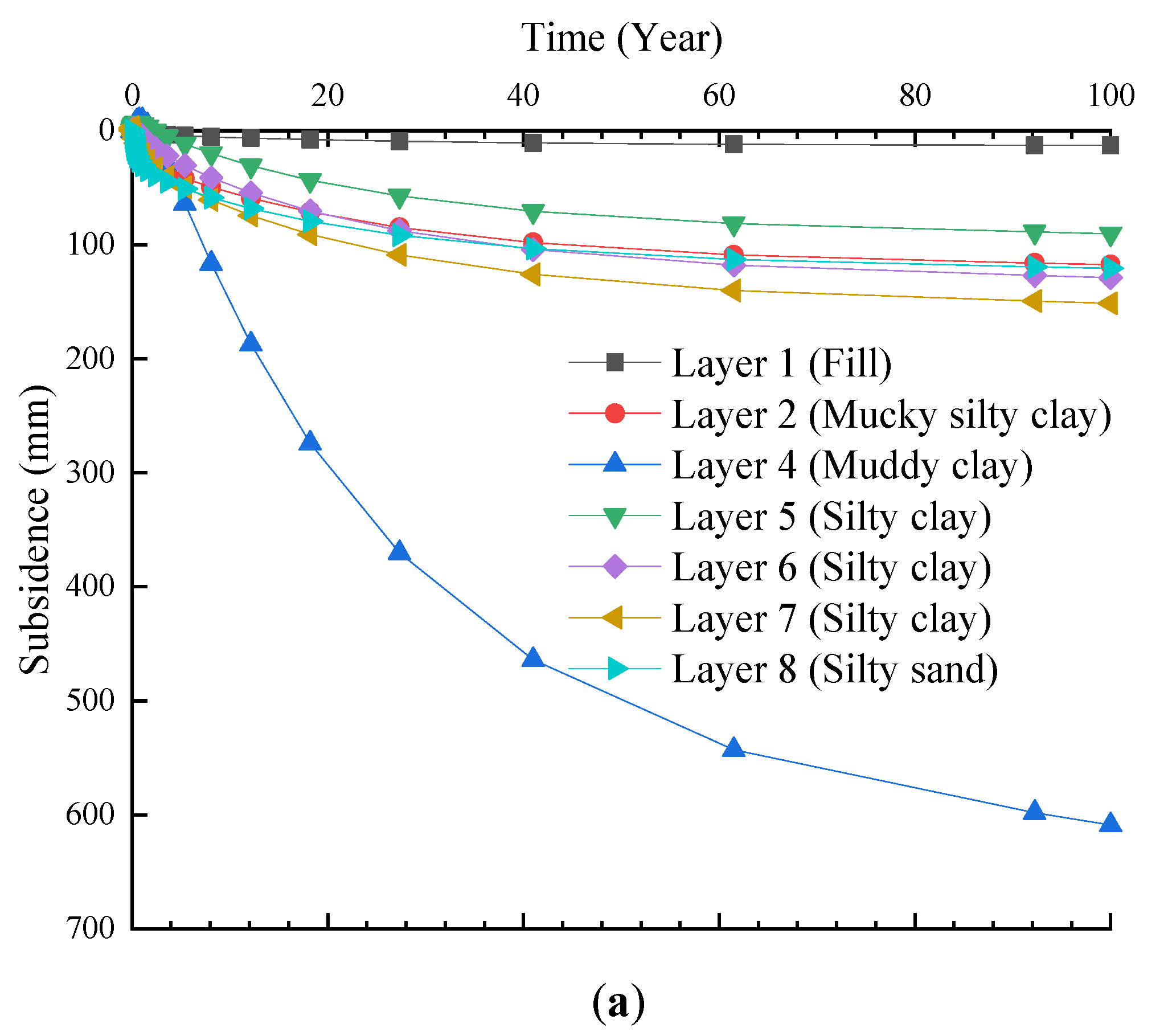





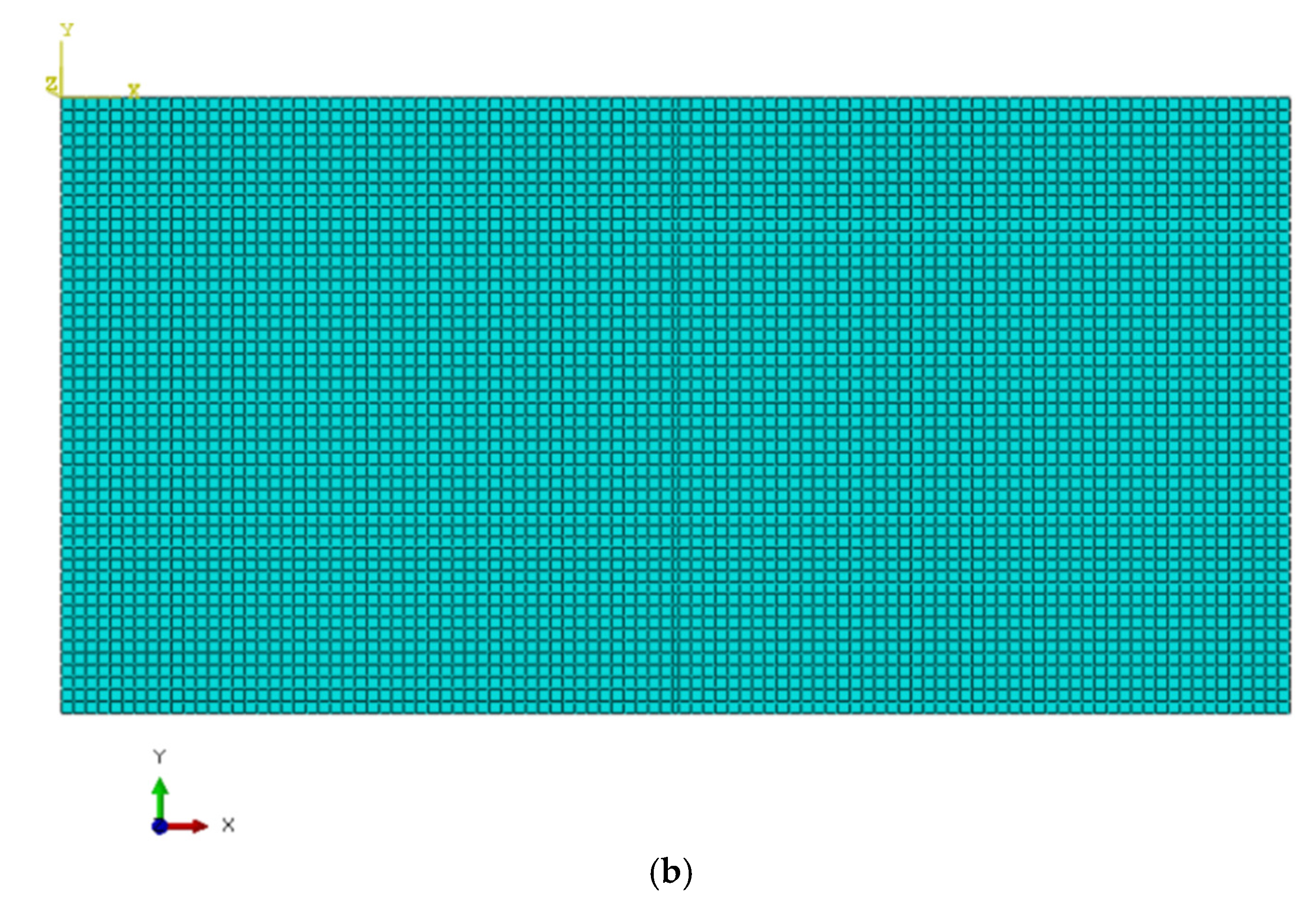


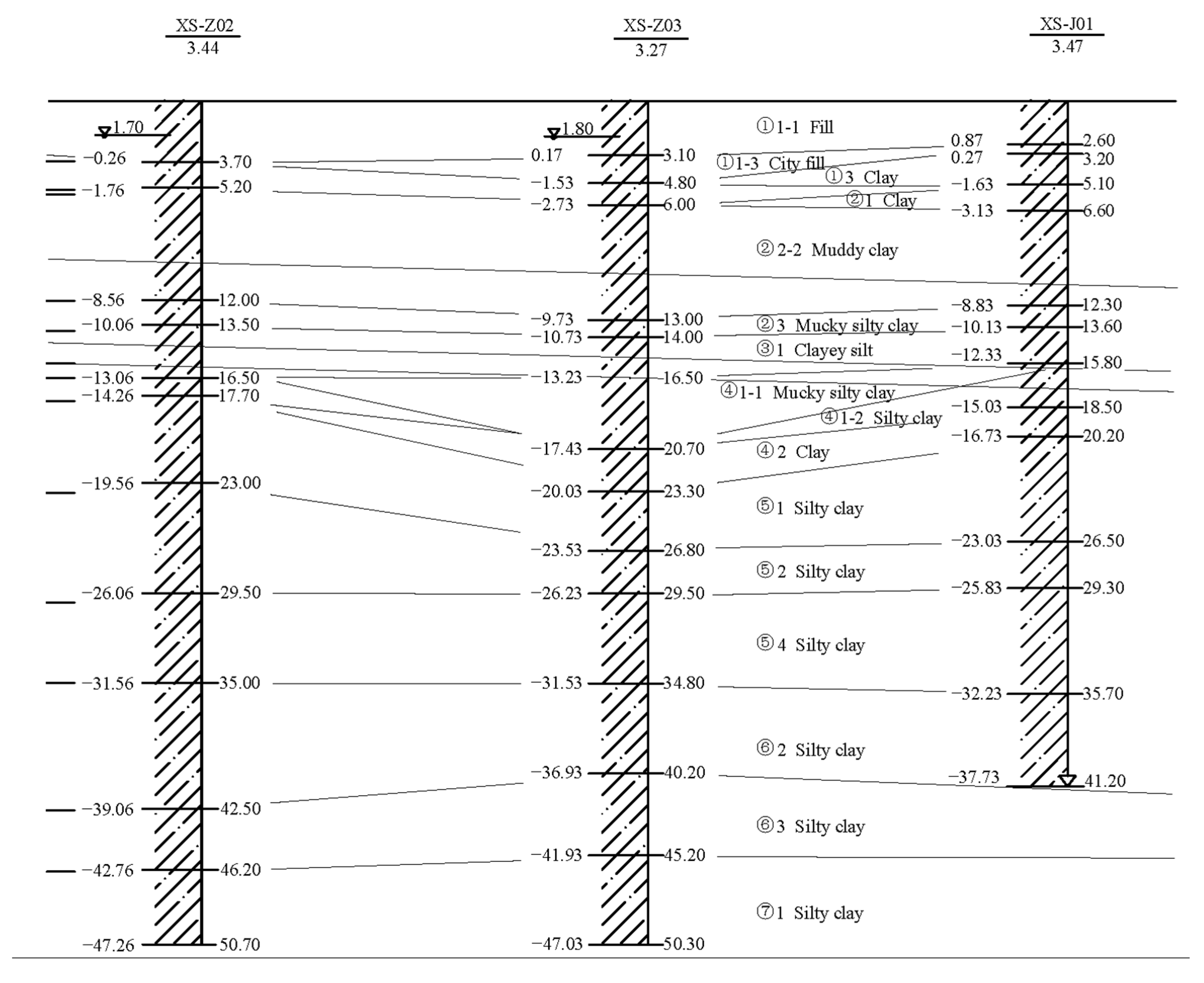
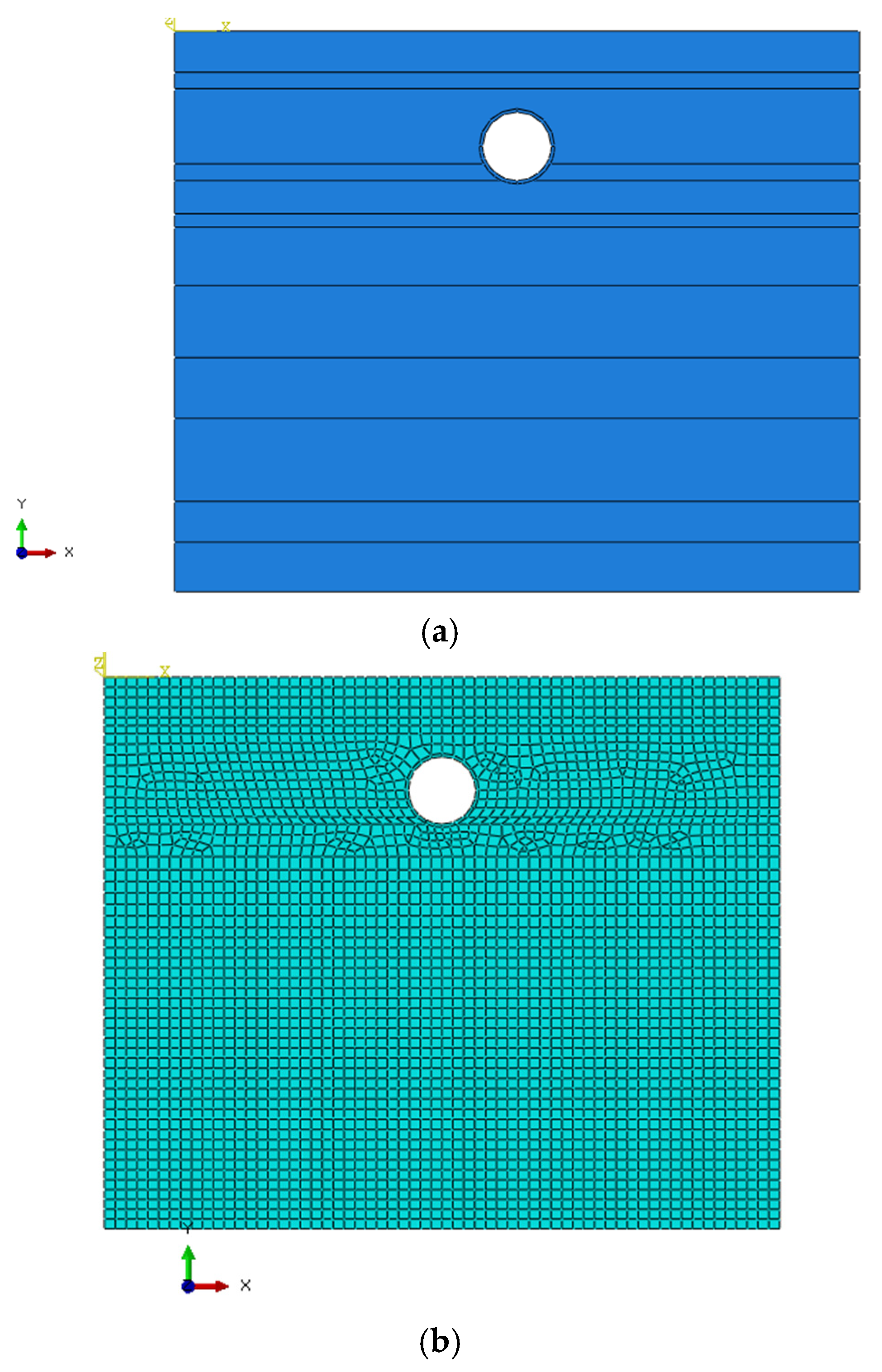
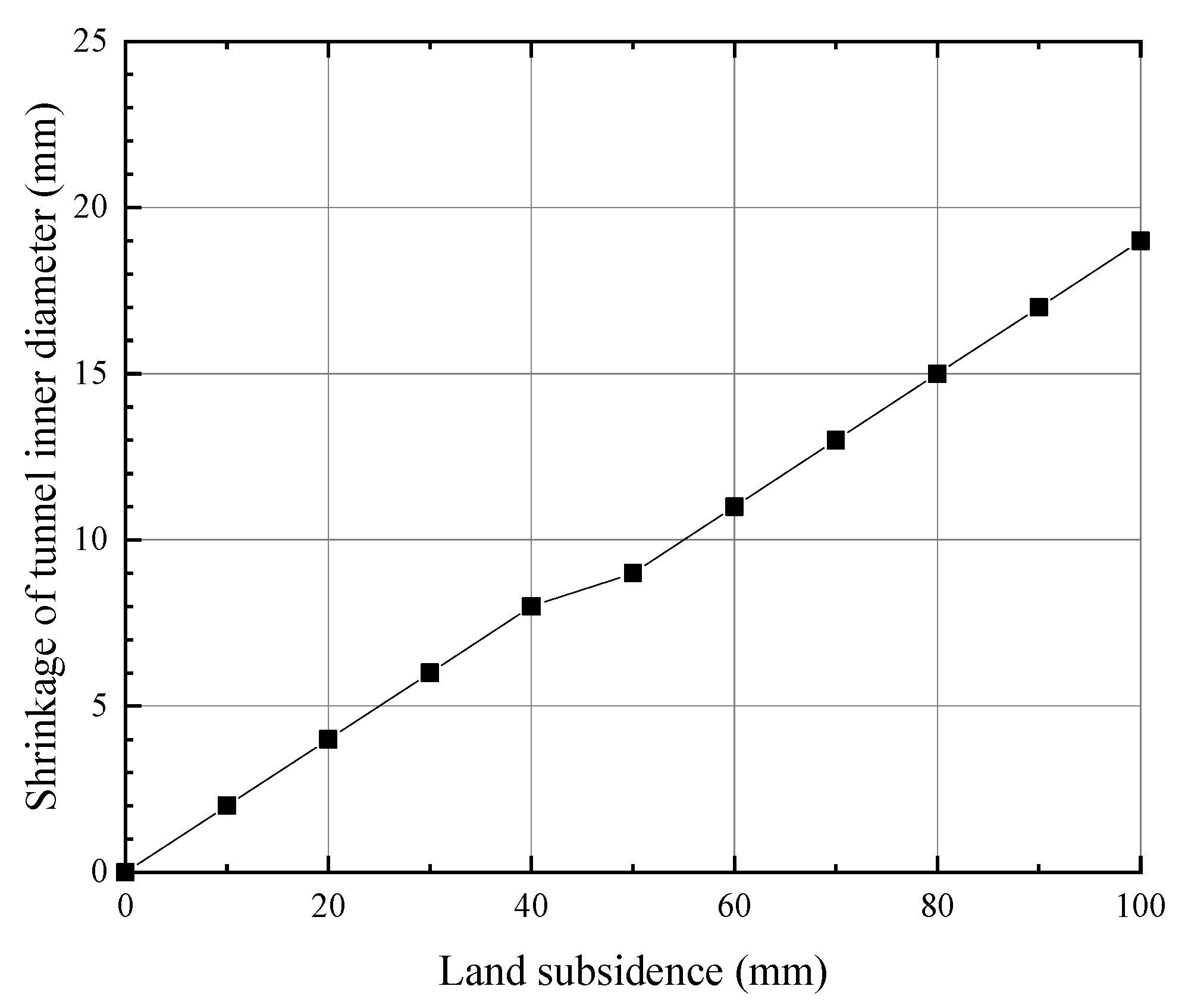
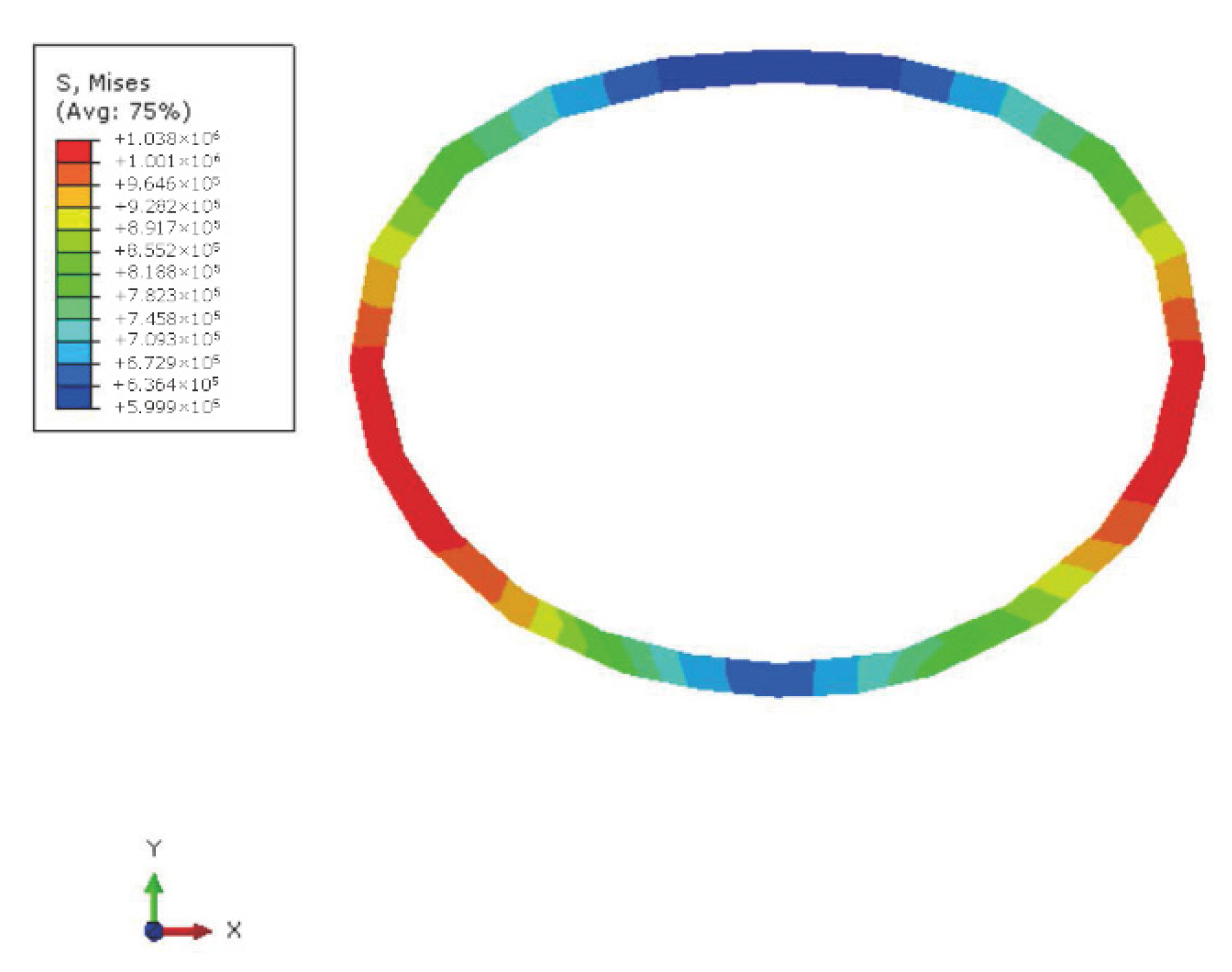

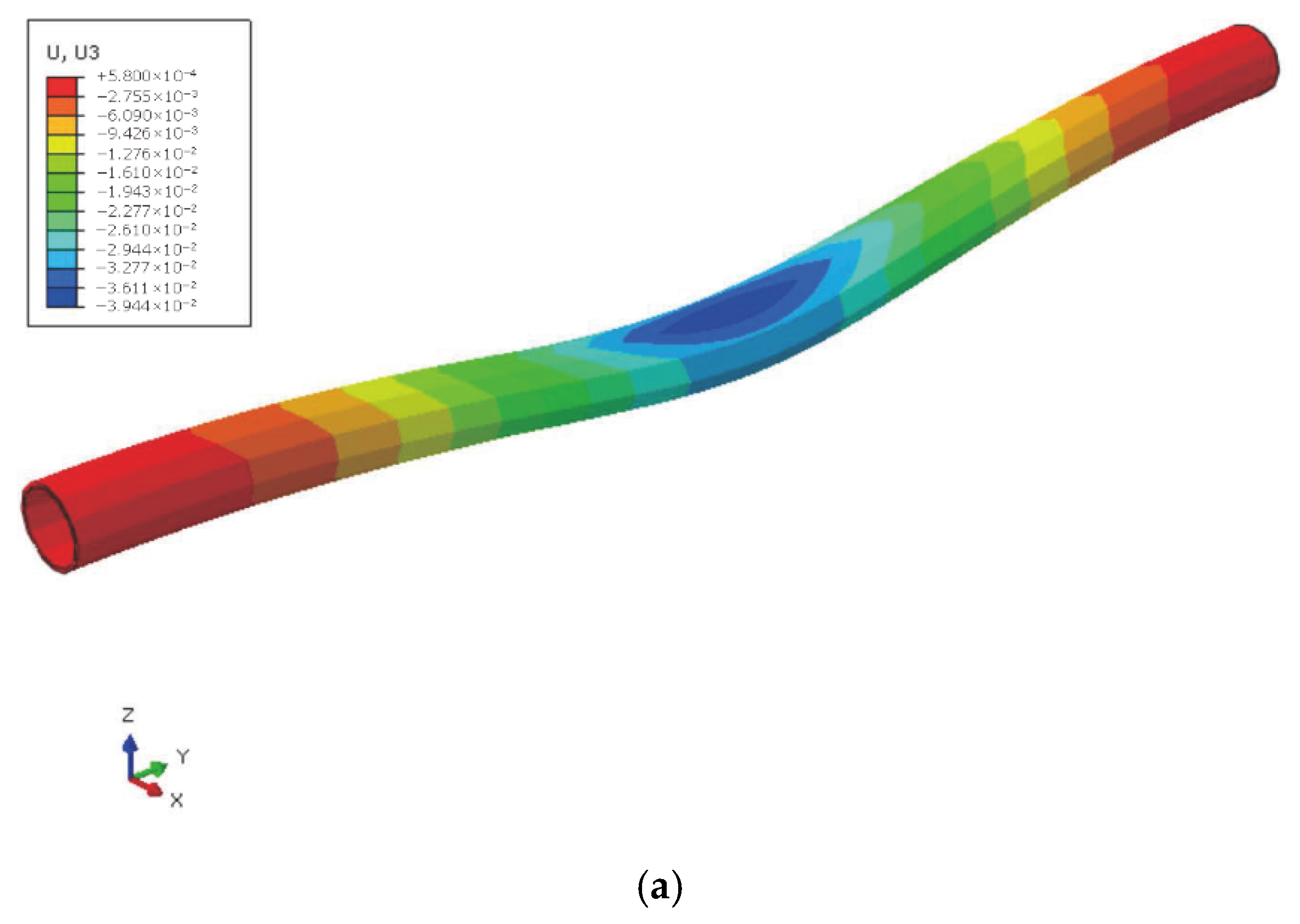


| References | Main Cause (s) | Maximum Cumulative Subsidence/mm | Maximum Subsidence Rate/(mm·a−1) | Negative Influence | Control Strategy |
|---|---|---|---|---|---|
| Pacheco-Martínez et al. [16] (2013) | Groundwater extraction | 1300 | 111.8 | Damage to infrastructures, roads, pipelines and well casings | Updating the building codes and designs, more accurate numerical models |
| Nguyen [17] (2016) | Groundwater extraction, management of underground urban infrastructure | - | 15 | Road collapse, project delay | Controlling groundwater exploitation, managing the underground space development |
| Zhu et al. [18] (2015) | Groundwater extraction | 342 | 52 | - | - |
| Zhao et al. [19] (2022) | Urban subway construction, building construction, groundwater extraction | 90 | 57 | Karst collapse of the ground, ground collapse hazards | More SAR satellites and higher radar accuracy |
| Takagi et al. [20] (2017) | Extracting groundwater for industrial usage | - | 215 | Risk of flooding | Construction of large dykes and more pumping stations |
| Suganthi & Elango [21] (2020) | Groundwater overpumping | 52 | 8 | - | Reducing the extraction of groundwater, increasing the groundwater recharge |
| Stage | Duration | Cumulative Subsidence/mm | Subsidence Rate/(mm·a−1) | Area of Subsidence Funnels/(km2) | |
|---|---|---|---|---|---|
| Initial stage | 1964~1977 | 175 | 12.5 | 42 | |
| Development stage | 1978~1985 | 320 | 18.9 | 91 | |
| Relatively stationary stage | 1986–now | 2015 | 594.4 | 5.9 | 482.8 |
| 2018 | 607.8 | 3.4 | - | ||
| 2021 | 617.1 | 1.6 | - | ||
| Layer No. | Layer | Layer Thickness/m | Density/(g·cm−3) | Void Ratio | Coefficient of Compressibility/MPa | Permeability Coefficient/(cm·s−1) | Cohesion/kPa | Angle of Internal Friction/° |
|---|---|---|---|---|---|---|---|---|
| 1 | Fill | 4 | 1.8 | 1.129 | 3.0 | 2.40 × 10−7 | 14.4 | 10.1 |
| 2 | Mucky silty clay | 8.8 | 1.8 | 1.129 | 3.0 | 2.40 × 10−7 | 14.4 | 10.1 |
| 4 | Muddy clay | 17 | 1.79 | 1.176 | 2.8 | 1.00 × 10−7 | 16.6 | 9.8 |
| 5 | Silty clay | 4 | 1.96 | 0.78 | 6.6 | 3.40 × 10−7 | 29.1 | 17.6 |
| 6 | Silty clay | 4.6 | 1.91 | 0.859 | 6.2 | 3.40 × 10−7 | 24.2 | 17.4 |
| 7 | Silty clay | 4.7 | 1.93 | 0.823 | 6.2 | 3.40 × 10−7 | 27.3 | 17.7 |
| 8 | Silty sand | 6.9 | 1.98 | 0.641 | 13.3 | 5.00 × 10−5 | 12.3 | 31.4 |
| Layer No. | Layer | Layer Thickness/m | Density/(g·cm−3) | Void Ratio | Coefficient of Compressibility/MPa | Cohesion/kPa | Angle of Internal Friction/° |
|---|---|---|---|---|---|---|---|
| 1-1 | Fill | 3.7 | 1.72 | 1.551 | 2.26 | 15.5 | 9.2 |
| 1-3 | Muddy clay | 1.5 | 1.72 | 1.551 | 2.26 | 15.5 | 9.2 |
| 2-2-2 | Muddy clay | 6.8 | 1.75 | 1.290 | 2.62 | 16.8 | 10.2 |
| 2-3 | Mucky silty clay | 1.5 | 1.82 | 1.074 | 3.12 | 20.5 | 11.7 |
| 3-1 | Clayey silt | 3.0 | 1.94 | 0.822 | 6.4 | 11.7 | 28.3 |
| 4-1-2 | Silty clay | 1.2 | 1.85 | 0.967 | 3.93 | 22 | 14.4 |
| 5-1 | Silty clay | 5.3 | 1.96 | 0.792 | 6.59 | 43.2 | 17.9 |
| 5-2 | Silty clay | 6.5 | 1.90 | 0.894 | 5.52 | 35.3 | 16.9 |
| 5-4 | Silty clay | 5.5 | 1.87 | 0.957 | 4.39 | 30.6 | 13.4 |
| 6-2 | Silty clay | 7.5 | 1.86 | 0.997 | 4.5 | 27.5 | 13.8 |
| 6-3 | Silty clay | 3.7 | 1.86 | 0.987 | 4.85 | 31.1 | 14.9 |
| 7-1 | Silty clay | 4.5 | 1.99 | 0.723 | 7.44 | 46.8 | 19.6 |
Disclaimer/Publisher’s Note: The statements, opinions and data contained in all publications are solely those of the individual author(s) and contributor(s) and not of MDPI and/or the editor(s). MDPI and/or the editor(s) disclaim responsibility for any injury to people or property resulting from any ideas, methods, instructions or products referred to in the content. |
© 2022 by the authors. Licensee MDPI, Basel, Switzerland. This article is an open access article distributed under the terms and conditions of the Creative Commons Attribution (CC BY) license (https://creativecommons.org/licenses/by/4.0/).
Share and Cite
Gao, F.; Zhao, T.; Zhu, X.; Zheng, L.; Wang, W.; Zheng, X. Land Subsidence Characteristics and Numerical Analysis of the Impact on Major Infrastructure in Ningbo, China. Sustainability 2023, 15, 543. https://doi.org/10.3390/su15010543
Gao F, Zhao T, Zhu X, Zheng L, Wang W, Zheng X. Land Subsidence Characteristics and Numerical Analysis of the Impact on Major Infrastructure in Ningbo, China. Sustainability. 2023; 15(1):543. https://doi.org/10.3390/su15010543
Chicago/Turabian StyleGao, Feng, Tuanzhi Zhao, Xuebin Zhu, Lingwei Zheng, Wenjun Wang, and Xudong Zheng. 2023. "Land Subsidence Characteristics and Numerical Analysis of the Impact on Major Infrastructure in Ningbo, China" Sustainability 15, no. 1: 543. https://doi.org/10.3390/su15010543
APA StyleGao, F., Zhao, T., Zhu, X., Zheng, L., Wang, W., & Zheng, X. (2023). Land Subsidence Characteristics and Numerical Analysis of the Impact on Major Infrastructure in Ningbo, China. Sustainability, 15(1), 543. https://doi.org/10.3390/su15010543








